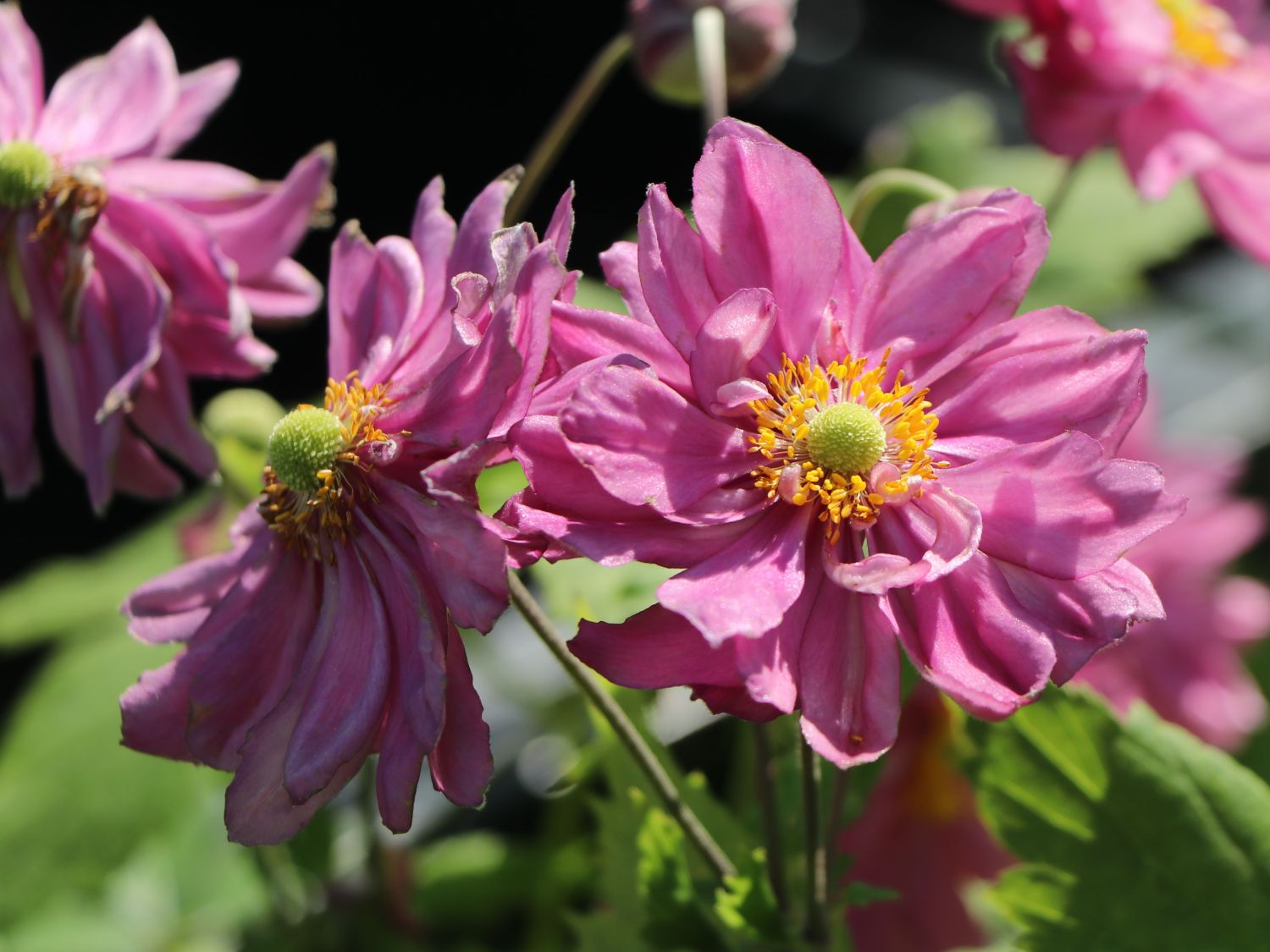If you’re looking to add late season color to your garden, Fall in Love ‘Sweetly’ anemone is a beautiful choice. This perennial provides a bounty of semi-double, rose-pink blooms and attractive foliage from late summer into fall. Read on to learn more about growing and caring for this stellar plant.
Overview
Fall in Love ‘Sweetly’ is a hybrid Japanese anemone cultivar in the Anemone hupehensis species It was bred by renowned perennial breeder Hans Hansen at Walters Gardens in Michigan
Some key features of this anemone variety include
- Rose-pink colored flowers with darker pink centers
- Flowers are 2-3 inches wide with semi-double form
- Blooms late summer through fall
- Flowers rise above mounds of dark green foliage
- Grows 20-26 inches tall and spreads 24-30 inches wide
- Hardy in zones 4-8
This robust plant has good resistance to common pests like deer and rabbits. The blooms attract butterflies to the garden. The foliage has an upright habit and spreads slowly via rhizomes.
Growing Conditions
Fall in Love ‘Sweetly’ is easy to grow and quite adaptable. Here are its preferred growing conditions:
Sun: Full sun to partial shade
Soil: Average, medium moisture, well-draining soil
pH: Acidic to neutral
Hardiness: Zones 4-8
Spacing: 24-30 inches apart
This anemone grows well in most garden soil types. Rich, fertile soil will promote the best flower production. Good drainage is important to prevent soggy roots.
Care and Maintenance
Caring for Fall in Love ‘Sweetly’ anemone is quite straightforward:
Watering: Keep soil evenly moist, watering during drought. Requires average water.
Fertilizer: Apply a balanced fertilizer in spring.
Pruning: Cut back spent flower stems in late fall.
Winter Care: Mulch plants in late fall to protect from frost heaving. Remove in spring.
Pests/Diseases: Generally pest and disease resistant. Watch for slugs, snails, powdery mildew, and rust.
Propagation: Divide overcrowded clumps in spring or fall.
Deadheading is not necessary since the flowers dry neatly on the stems. Stake tall stems if needed. Other than removing dead growth in late fall, minimal maintenance is required.
Uses in the Landscape
There are many ways to showcase Fall in Love ‘Sweetly’ anemone in gardens:
- Mass plant in perennial borders or cottage gardens
- Combine with grasses, asters, sedum and mums for fall interest
- Grow in containers on patios and decks
- Cut flowers for fresh bouquets
- Plant as a specimen in a rock garden
- Naturalize in meadows or woodland settings
The rose pink blooms pop against darker flowers like asters and complement softer pastel colors. The tidy mounds of foliage provide structure before and after blooming.
Companion Plants
Here are some ideal companion plants for Fall in Love ‘Sweetly’:
- Ornamental grasses: switch grass, maiden grass, fountain grass
- Late bloomers: Russian sage, asters, goldenrod, stonecrop
- Foliage: hosta, ferns, coral bells, Japanese maples
- Spring bulbs: daffodils, tulips, hyacinths, crocus
Choose companion plants with contrasting heights, textures, and bloom times to create seasonal interest in the garden.
Alternatives and Cultivars
If you like the look of Fall in Love ‘Sweetly’ but want to explore other options, here are a few alternatives:
- Honorine Jobert – pure white flowers, 48 inches tall
- Queen Charlotte – semi-double pink, 36 inches tall
- Wild Swan – single white flowers with purple undersides
- September Charm – rose-purple, early bloomer
- x hybrida varieties – mixed colors, double flowers
There are also a few sister seed strains in the Fall in Love series:
- Fall in Love ‘Madly’ – bright rose flowers
- Fall in Love ‘Deeply’ – crimson-rose blooms
With its carefree growth, graceful flowers, and weeks of autumn color, Fall in Love ‘Sweetly’ is a standout in the fall garden. This Japanese anemone hybrid thrives with minimal care and combines beautifully with many other perennials. For an easy-care plant that shines in the later season, look no further than this gorgeous anemone.
FALL IN LOVE® Sweetly Anemone | Walters Gardens
FAQ
Is Anemone fall in love sweetly invasive?
What does the Anemone symbolize in love?
What are the best fall anemones?
Is Anemone a perennial?
- A Complete Guide to Caring for Yuki Cherry Blossom Shrub - January 23, 2025
- Identifying Red Hot Poker Seeds: What to Look For When Harvesting Torch Lily Pods - January 23, 2025
- A Complete Guide to Harvesting Evening Primrose Seeds - January 23, 2025

